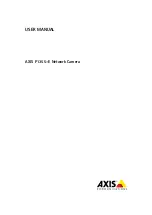
13-2
Cisco ME 3400 Ethernet Access Switch Software Configuration Guide
OL-9639-07
Chapter 13 Configuring IEEE 802.1Q Tunneling and Layer 2 Protocol Tunneling
Understanding 802.1Q Tunneling
Each customer requires a separate service-provider VLAN ID (S-VLAN), but that VLAN ID supports
all of the customer’s VLANs. Configuring 802.1Q tunneling on a tunnel port is referred to as
traditional
QinQ
.
Customer traffic tagged in the normal way with appropriate VLAN IDs comes from an 802.1Q trunk port
on the customer device and into a tunnel port on the service-provider edge switch. The link between the
customer device and the edge switch is asymmetric because one end is configured as an 802.1Q trunk
port, and the other end is configured as a tunnel port. You assign the tunnel port interface to an access
VLAN ID that is unique to each customer. See
Figure 13-1
.
Note
By default, VLANs configured on the switch are user network interface-enhanced network interface
(UNI-ENI) isolated VLANs. In a UNI-ENI isolated VLAN, 802.1Q tunneled access ports on the switch
are isolated from each other. If you use the
uni-vlan community
VLAN configuration command to
change a VLAN to a UNI-ENI community VLAN, local switching occurs between these ports. For more
information about UNI-ENI VLANs, see
Chapter 11, “Configuring VLANs.”
Figure 13-1
802.1Q Tunnel Ports in a Service-Provider Network
Packets coming from the customer trunk port into the tunnel port on the service-provider edge switch
are normally 802.1Q-tagged with the appropriate VLAN ID. The the tagged packets remain intact inside
the switch and when they exit the trunk port into the service-provider network, they are encapsulated
with another layer of an 802.1Q tag (called the
metro tag
) that contains the VLAN ID that is unique to
the customer. The original customer 802.1Q tag is preserved in the encapsulated packet. Therefore,
packets entering the service-provider network are double-tagged, with the outer (metro) tag containing
the customer’s access VLAN ID, and the inner VLAN ID being that of the incoming traffic.
When the double-tagged packet enters another trunk port in a service-provider core switch, the outer tag
is stripped as the switch processes the packet. When the packet exits another trunk port on the same core
switch, the same metro tag is again added to the packet.
Figure 13-2
shows the tag structures of the
double-tagged packets.
Customer A
VLANs 1 to 100
Customer B
VLANs 1 to 200
Customer B
VLANs 1 to 200
Customer A
VLANs 1 to 100
Tunnel port
VLAN 40
Tunnel port
VLAN 30
Trunk
ports
Trunk
ports
Tunnel port
VLAN 30
Tunnel port
VLAN 40
Service
provider
74016
Trunk
Asymmetric link
Tunnel port
VLAN 30
Summary of Contents for ME 3400 Series
Page 40: ...Contents xl Cisco ME 3400 Ethernet Access Switch Software Configuration Guide OL 9639 07 ...
Page 44: ...xliv Cisco ME 3400 Ethernet Access Switch Software Configuration Guide OL 9639 07 Preface ...
Page 1138: ...Index IN 52 Cisco ME 3400 Ethernet Access Switch Software Configuration Guide OL 9639 07 ...
















































